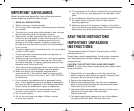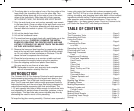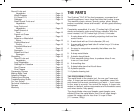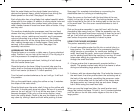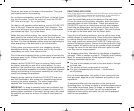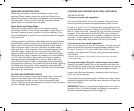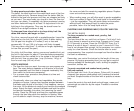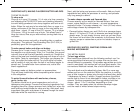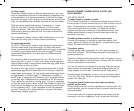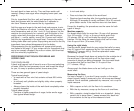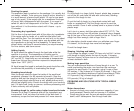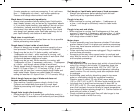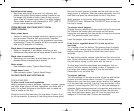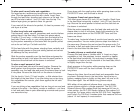
6
There are two levers on the base of the machine. They give
you fingertip control of processing.
For continuous processing, use the ON lever, at the left. Press
it to start the motor. To turn the motor off, press the PULSE/
OFF lever at the right. Try it a few times.
For rapid on-off operation called pulsing, use the PULSE/ OFF
lever at the right. Press the lever down, then release it. The
motor runs as long as you hold the lever down; it stops when
you release the lever. Try it a few times.
Notice that you control pulsing. You control the duration of
each pulse by the amount of time you hold the lever down. You
control the frequency of pulses by the rate at which you press
the lever. The interval between pulses must be long enough to
allow everything in the work bowl to fall to the bottom.
Pulsing gives you precise control over chopping, mincing,
blending and mixing. You can process food to any texture or
consistency you want, from coarse to fine.
One of the most surprising things to new users is how fast the
processor does its job. It takes a little practice to get used to its
exceptional speed.
Always use the PULSE/OFF lever for pulsing. Never move
the pusher assembly on and off to control pulses. For your
protection, the machine has a fast-stop circuit that operates as
soon as the pusher assembly is unlocked. Rapid and repeated
locking and unlocking of the pusher assembly will strain that
circuit and damage the processor.
Always turn the machine off with the PULSE/OFF lever and
wait until the blade or disc comes to a complete stop before
removing the pusher assembly. The motor stops within
seconds after the machine has been turned off.
IMPORTANT: To keep its powerful motor well ventilated, fans
in the food processor base provide a stream of cooling air. To
ensure proper ventilation of the motor during heavy use, place
the machine so there are at least 4 inches of clear space on
all sides.
PRACTICING WITH FOOD
After trying continuous operation with the ON lever and pulsing with
the PULSE/OFF lever, practice with some food. A raw zucchini or
potato is a good choice. Cut it in 2 inch (5 cm) pieces.
Insert the metal blade and put the pieces in the work bowl.
Put on the cover and the pusher assembly; press the pusher
assembly down to lock it into place. Press and release the
PULSE/OFF lever two or three times and see what happens.
Each time the blade stops, let the pieces of food drop to the
bottom of the bowl before you pulse again. This puts the food
in the path of the blade each time the motor starts.
Using the on-off pulsing technique, you can get an even chop
without danger of overprocessing. Check the texture frequently
by looking through the cover of the work bowl. If you want a
finer chop, press and release the PULSE/OFF lever until you
achieve the desired texture. Onions and other food with a high
water content will quickly end up as a purée unless examined
through the cover of the work bowl after each pulse to make
sure they are not overprocessed.
Try chopping other food, like meat for hamburger or breakfast
sausage. Refer to section on page 8, “Chopping and Puréeing
Meat” for correct procedure. Some important factors in
obtaining consistent results are:
ᮣ
The size of the pieces you add to the work bowl or through
the feed tube.
ᮣ
The amount of food you process at one time.
ᮣ
The type of processing you choose — continuous or
on-off pulsing.
As in all food preparation, the quality of your results with the
food processor depends on the freshness and quality of your
ingredients.
To become familiar with the operation of the slicing and
shredding discs, try slicing an apple or shredding some carrots.
Then make mayonnaise, pastry or bread, as described in the
recipes at the end of this book. You will be surprised and
delighted at how quickly and easily they all can be prepared
with the food processor.




